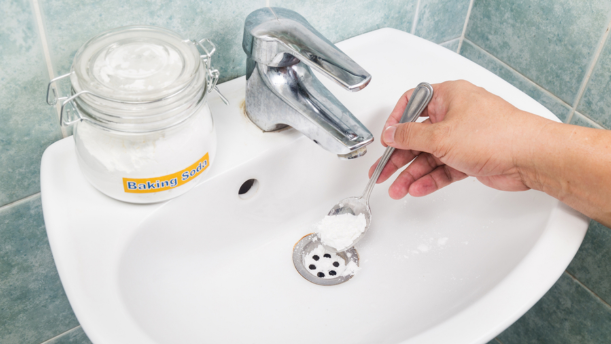Simple ways to clean drains
- 07/17/2019

It is essential to clean drains regularly since over the course of the time organic residue may start to accumulate in the drains leading to clogs. When organic residue accumulates in the drains and builds up over the course of time, it can also lead to unbearable odor in the building. A clogged drain will also impede the passage of water in the drainage system resulting in more severe problems. It can lead to problems such as seepage of water through the drainage system. Therefore, we recommend that a regular process to clean drains should be performed in order to treat odor and accumulation of organic residue. In this article, we will explain a process following which the readers can perform the process to clean drains at home without requiring any professional help.
Odor and organic residue treatment
The odor in clogged drains is usually due to the presence of bacteria and organic residue, which has started to decay. The first step involved in the process to carry out the comprehensive drains cleaning is to treat odor and organic residue with the help of a cleaning agent. We recommend using a natural cleaning agent such as baking powder or vinegar for the purpose. However, biological cleaners, salt, and lemon can also be used in order to perform the odor treatment process. The process to treat odor and organic residue involves the following steps:
- In the first step, prepare an appropriate cleaning agent in order to treat the odor situation of the drains. We recommend that an appropriate concentration of the cleaning solution should be used in order to achieve the best results.
- Now, pour boiling hot water into the drains so that it can start the cleaning process.
- Now, pour the cleaning agent into the drains so that it can kill off the bacteria’s, which are responsible for the spread of odor in the drains. The cleaning agent will also remove deposited minerals in the drains that can otherwise damage the drains in a longer run.
- Other biological cleaners can also be used in the case there are mold and fungus growing inside.
- In the end, pour water in order to clean drains thoroughly.
The process to remove clogs in the drain
It is of paramount importance to remove clogs from the drains as otherwise it can lead to
permanent damage to the drainage system. The steps involved in the process to remove clogs are as follows:
- We recommend using a plunger in order to remove clogs from the drains. The plunger can help remove the clogged residue from the drain since it has an effective pump mechanism. Place the plunger firmly over the drain in such a way that it forms a perfect seal. Once the plunger has been fit over the drain, pump it continuously for some time until it starts to suck the clogging residue from the drain. Continue the process until it completely clears the drain.
- Another effective method to clear a clogged drain is the use of heating pad for melting the organic residue. In order to perform the process, wrap a heating pad around the pipe in order to raise its temperature. Now, let hot water pass through the pipe, which will melt the organic residue clogged inside and eventually clear the drains.
For more cleaning tips Air Purification, Silver Cleaning, clean Garden tools.